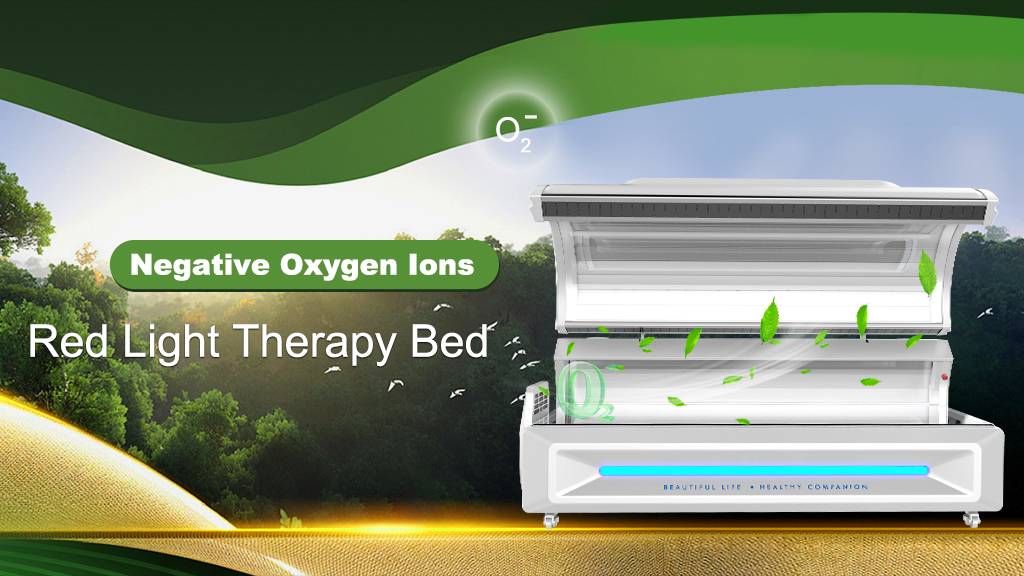Red light therapy, also called low-level laser therapy (LLLT) or photobiomodulation (PBM), uses red or near-infrared light to treat various conditions. LED red light therapy beds are designed to expose the body to these wavelengths of light to promote healing and wellness. Here are some of the benefits and how well it works:
How LED Red Light Therapy Works
Red light therapy uses light in the 600-650 nm range (visible red light) or 800-880 nm range (near-infrared light). The light is absorbed by the mitochondria in cells, which boosts energy production (ATP) and helps cells to repair and regenerate. This stimulation of cellular processes can help in healing and provide therapeutic benefits for various conditions.
The benefits of LED red light therapy beds include:
Improved skin health
More collagen production: Red light is often used to improve skin texture, reduce wrinkles, and promote collagen production. This helps reduce the appearance of fine lines and may even help reverse some signs of aging.
Acne treatment: Red light therapy has been shown to reduce inflammation and bacteria, which can help manage acne breakouts.
Wound healing: Red light can speed up tissue repair, helping you recover from cuts, scars and other skin injuries more quickly.
It can also help reduce pain and swelling.Joint and muscle pain: Red light therapy can help reduce inflammation in tissues, helping you to recover faster from exercise or injuries. It may also help with long-term pain conditions like arthritis, tendinitis, and muscle soreness.
Better blood flow: By increasing blood flow, red light therapy can deliver more oxygen and nutrients to injured areas, helping them to heal more quickly.
Hair GrowthRed light therapy is sometimes used to make hair grow in people who are losing their hair. This is called androgenic alopecia. Studies show that red light therapy can increase the number of hairs and hair follicles in some people.
Mood and Sleep ImprovementCircadian rhythm regulation: Exposure to red light in the evening may help improve sleep quality by increasing melatonin production, leading to better sleep cycles.
It can also help reduce symptoms of depression. There is some evidence that red light therapy can have a positive impact on mood, reducing symptoms of depression and anxiety by enhancing brain function and reducing inflammation in the brain.
Faster muscle recovery: Athletes and fitness fans often use red light therapy beds after a workout to reduce soreness and speed up muscle repair. The therapy can help reduce oxidative stress in muscles, enhancing recovery.
Increased muscle strength and endurance: Some studies suggest that red light therapy might improve muscle performance by increasing the activity of the mitochondria (the cell’s energy production factories) and ATP production.
How well do LED red light therapy beds work?
How well red light therapy works can depend on several things, such as:
The wavelength and intensity of the light. The therapy uses light at specific wavelengths (usually between 600-650 nm and 800-880 nm) and at a certain intensity (measured in joules per cm²). These things can affect the treatment’s results. For example, near-infrared light can go deeper into tissues, while red light is better for treating the surface of the skin.
How long the light is on for: Treatments usually last between 10 and 20 minutes. The frequency of sessions is also important; for many benefits, 2–3 sessions per week may be recommended.
It’s also important to use the treatment regularly. Like many therapies, results may require ongoing treatment over weeks or months to fully see benefits.
Safety and side effects
Red light therapy is generally safe, with minimal side effects. It’s non-invasive and does not use UV light, so there’s no risk of skin damage like with tanning beds. However, it is often recommended to protect your eyes because prolonged exposure to bright lights can strain them.
There are no major contraindications, but individuals with photosensitivity or certain medical conditions (e.g. epilepsy) should consult a healthcare provider before using red light therapy beds.
Research
While many studies suggest that red light therapy is good for you, there are still more studies needed. Some benefits are more well-known (like better skin and less pain), while others, like how it affects mood or long-term weight loss, need more research.
Conclusion
LED red light therapy beds appear to offer a range of potential benefits, especially for skin health, pain relief, and muscle recovery. People often report improvements in their overall well-being after consistent use. However, it’s important to manage expectations and recognize that results can vary based on individual factors and the quality of the device.

